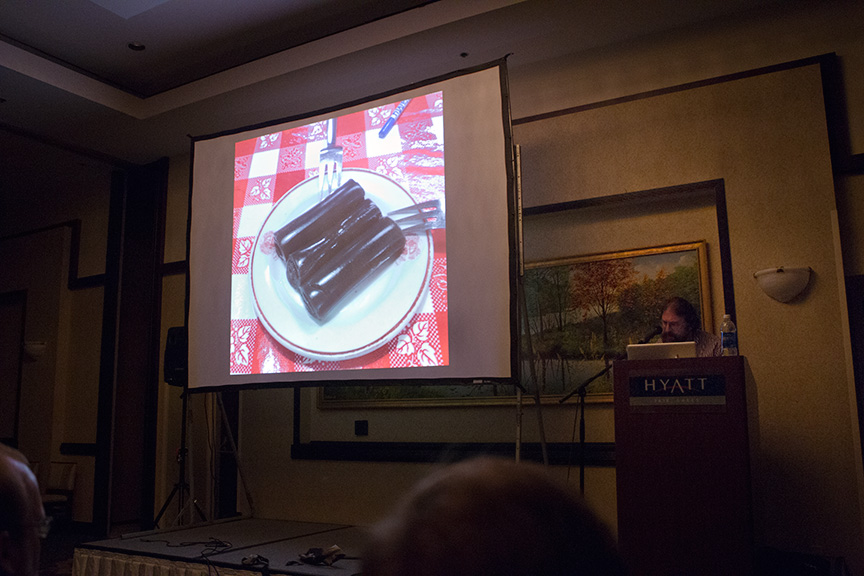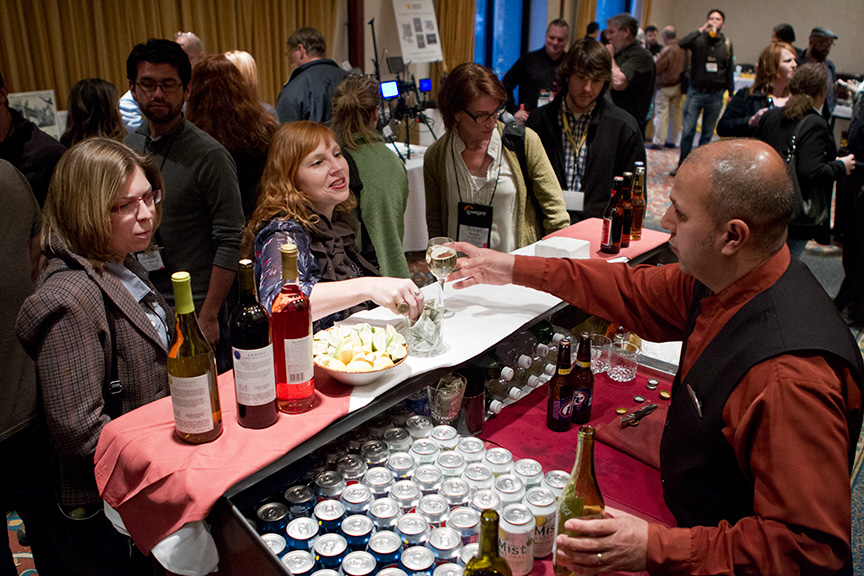The first day of NSC was great introduction to what the next two days were going to bring. The agenda was well thought out as each workshop built upon the other and/or overlapped in skillsets. The second day’s morning lecture was addressing the meaning of photography as well as how to leverage and even monetize online and social media presentation of visual storytelling.
The morning lecture was given by James Estrin, editor and co-founder, of the New York Times’ very popular photography blog, Lens. He began by setting the table in the world that photojournalists now deal with: a world completely saturated with digital imagery from around the world.
380 billion photos.
“…what we do is a very, very small percentage of that,” Estrin said.
And it is true, since photojournalism, that is quality, professional storytelling imagery is a small portion of photography as a whole, especially nowadays, and that decent (usable) photographs can be made by just about anyone, what is its value? Does it even matter?
Estrin says that photography has become more about the photographer than the subject, more than ever before due to the ubiquity of digital cameras/cameraphones and social media.

Estrin says that a photo like the one above would receive more attention, in the form of Facebook “Likes” than one of a starving child or warzone or some other important issue halfway around the world.
This begs two questions:
- Do people care more about telling people what they’re eating than someone’s suffering?
- Is what is considered a “good” or even “great” photo determined by what our friends and family think of it?
The answer is unclear because both yes and no suffice depending on their context. People do care about suffering, but aren’t more aware of it than they were before, even with social media. So, they seem apathetic. Excellent photography, that is the really awesome stuff, is still not determined by our close circle of friends. The image just has to stand out more than before because it has to compete with 380 billion other photos.
Estrin provided a great example of turning these hurdles into advantages to tell a story: Kony 2012.
As photojournalists we’re now expected to leverage social media and mobile technologies to tell our stories. In short, stills are no longer enough or the preferred method of storytelling nowadays. At nearly bare minimum, a series of photos or audio slideshow works well.

One of the best and most informative workshops of the second day was solo-video journalist, Bethany Swain (CNN). She made Final Cut Pro 7 not so scary and actually approachable. She gave us a lot of tips, shortcuts, and tricks to help make our Final Cut workflow better.
I’ve only used Final Cut like twice in my life and just getting started was a Catch 22: you had to know Final Cut to even use Final Cut. But Swain’s workshop helped me feel like I could dive right in and get some good practice.
To round off my day, I attended Andrew Geraci’s workshop on timelapse photography. Now, I’ve done timelapse before, but never to the quality of Andrew’s work. He’s got way more practice and way more insight into the gear and technique than I do.
He gave us a lot of help with regards to workflow, HDR timelapse technique, and troubleshooting. One of the best tidbits was how to do sunrise to sunset timelapses — in fact, he showed us three ways.
I don’t plan on doing much timelapse myself as it has the tendency to shorten a camera’s life considerably, but now I’ve found something for my “retired” Canon 40D to do.
Of course, at the end of the day, we PJs had to do a little unwinding and some more networking.


